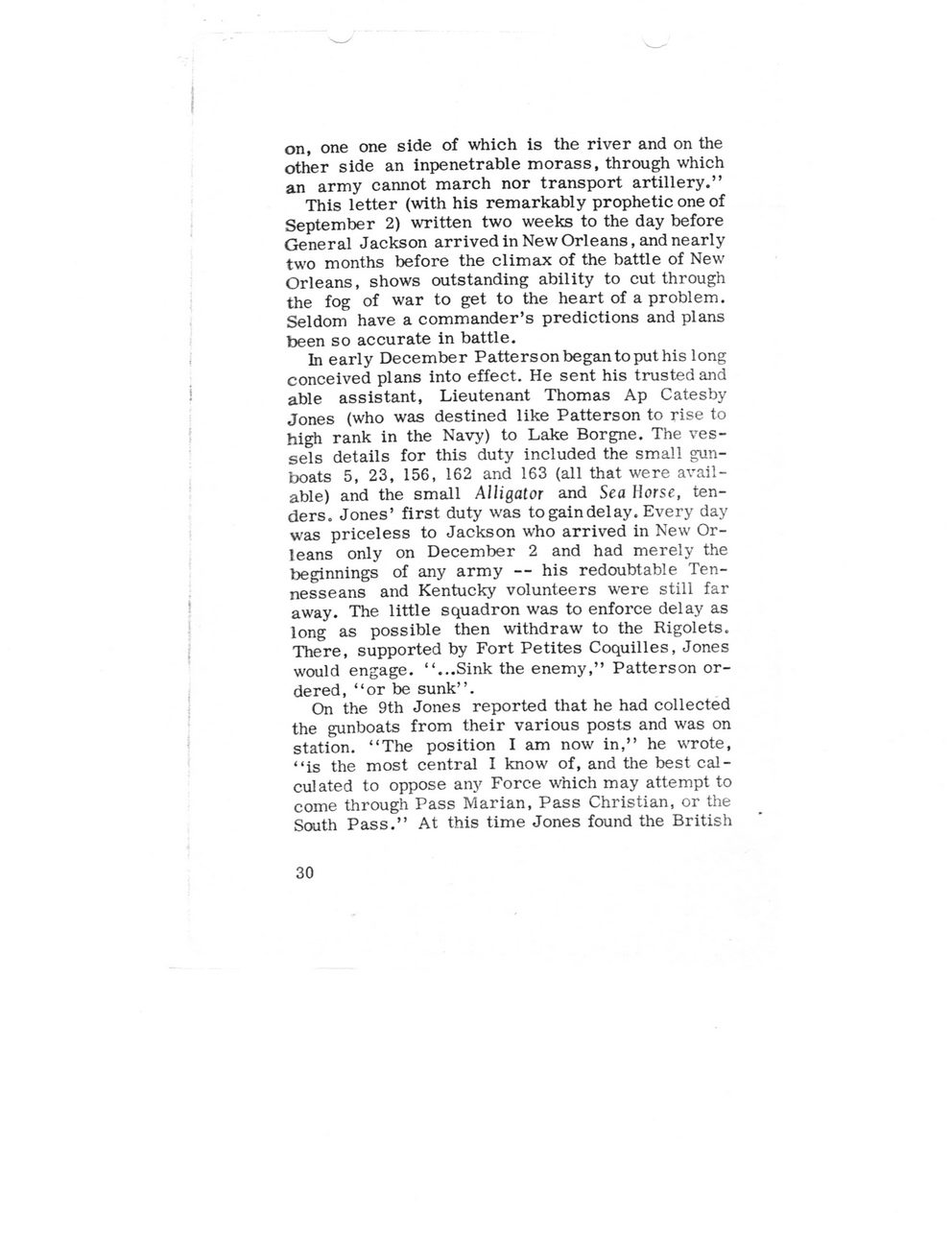This text was obtained via automated optical character recognition.
It has not been edited and may therefore contain several errors.
on, one one side of which is the river and on the other side an inpenetrable morass, through which an army cannot march nor transport artillery.? This letter (with his remarkably prophetic one of September 2) written two weeks to the day before General Jackson arrived in New Orleans, and nearly two months before the climax of the battle of New Orleans, shows outstanding ability to cut through the fog of war to get to the heart of a problem. Seldom have a commander?s predictions and plans been so accurate in battle. In early December Patterson began to put his long conceived plans into effect. He sent his trusted and able assistant, Lieutenant Thomas Ap Catesby Jones (who was destined like Patterson to rise to high rank in the Navy) to Lake Borgne. The vessels details for this duty included the small gunboats 5, 23, 156, 162 and 163 (all that were available) and the small Alligator and Sea Horse, tenders. Jones? first duty was to gain delay. Every day was priceless to Jackson who arrived in New Orleans only on December 2 and had merely the beginnings of any army ? his redoubtable Tennesseans and Kentucky volunteers were still far away. The little squadron was to enforce delay as long as possible then withdraw to the Rigolets. There, supported by Fort Petites Coquilles, Jones would engage. ?...Sink the enemy,? Patterson ordered, ?or be sunk?. On the 9th Jones reported that he had collected the gunboats from their various posts and was on station. ?The position I am now in,? he wrote, ?is the most central I know of, and the best calculated to oppose any Force which may attempt to come through Pass Marian, Pass Christian, or the South Pass.? At this time Jones found the British 30

Battle of 1814 P30